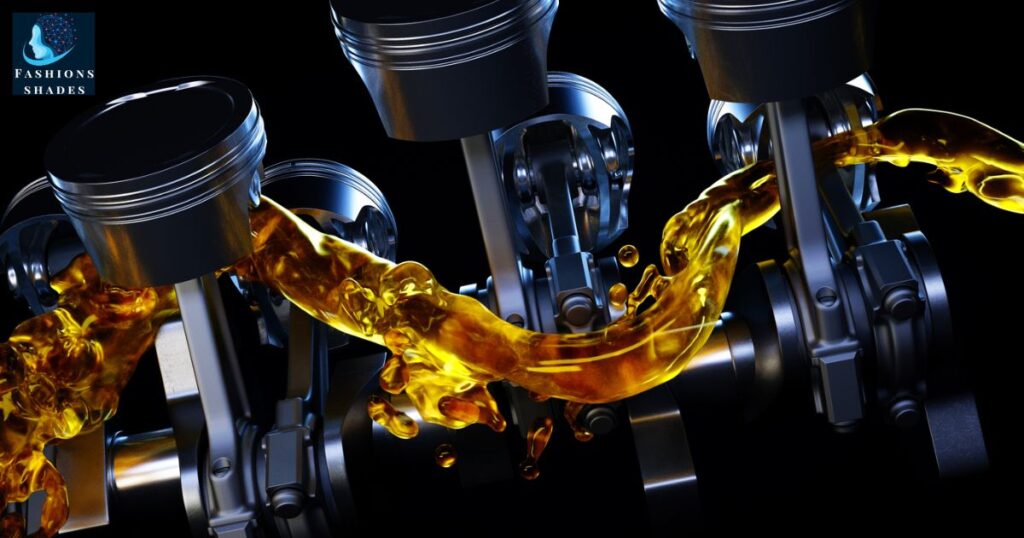Motor oil stains on clothes can be a frustrating and seemingly impossible challenge to overcome. These dark stubborn marks often appear permanent at first glance leaving many to believe their favorite garments are ruined beyond repair.
However with the right knowledge and techniques it is possible to successfully remove even the most stubborn motor oil stains from various fabrics. Understanding the nature of motor oil and how it interacts with different materials is the first step in conquering these persistent stains.
Motor oil is a complex mixture of hydrocarbons and additives designed to lubricate and protect engine components. When it comes into contact with fabric it can quickly penetrate the fibers creating a bond that is difficult to break.
The oil’s viscosity and chemical composition make it resistant to simple washing methods requiring specific treatments to effectively lift the stain without damaging the fabric.
Daily Tips for Removing Oil from Clothes

Prevention is always better than cure when it comes to oil stains. Wearing protective clothing while working with motor oil can significantly reduce the risk of stains. However accidents happen and when they do quick action is crucial.
As soon as you notice an oil stain blot the excess with a clean cloth or paper towel. Avoid rubbing the stain as this can spread the oil and push it deeper into the fabric.
For fresh stains applying a generous amount of baby powder talcum powder or cornstarch can help absorb the oil before it sets. Leave the powder on for several hours or overnight then brush it off and treat the area with a stain remover before washing. This simple daily habit can save many garments from permanent staining.
The Ultimate Guide to Oil Stain Removal

When dealing with set-in motor oil stains a more comprehensive approach is necessary. Begin by scraping off any excess dried oil with a dull knife or spoon. Next apply a small amount of dish soap directly to the stain.
Dish soap is designed to break down grease and oil making it an effective first line of defense. Gently work the soap into the fabric with your fingers or a soft-bristled brush.
After treating the stain with dish soap rinse the area with hot water. If the stain persists create a paste using equal parts baking soda and water. Apply this paste to the stain and let it sit for about 30 minutes.
The baking soda will help absorb the oil and lift it from the fabric fibers. Rinse thoroughly and repeat if necessary before washing the garment as usual.
Mastering the Art of Cleaning Oil-Stained Garments

Mastering oil stain removal requires patience and sometimes multiple treatments. For particularly stubborn stains consider using a commercial degreaser or stain remover specifically designed for oil-based stains. These products often contain enzymes or solvents that can break down the oil more effectively than household remedies.
When using any cleaning product always test it on an inconspicuous area of the garment first to ensure it won’t damage or discolor the fabric.
Apply the product according to the manufacturer’s instructions and allow it to sit for the recommended time. Rinse thoroughly and repeat the treatment if needed before laundering.
Read this Blog: how to get hair dye out of clothes
Your Go-To Resource for Oil Stain Solutions

Having a well-stocked laundry arsenal can make all the difference when tackling oil stains. In addition to dish soap and baking soda consider keeping these items on hand: white vinegar WD-40 hair shampoo and hydrogen peroxide. Each of these can be effective in certain situations and on different types of fabric.
White vinegar for example can be particularly useful for oil stains on delicate fabrics. Mix equal parts white vinegar and water apply to the stain and let sit for 15 minutes before washing.
WD-40 while not typically associated with laundry can be surprisingly effective at lifting oil stains. Spray a small amount on the stain let it sit for a few minutes then wash as usual.
Quick and Effective Methods for Oil Stain Removal

For those times when you need a quick solution try this method: place the stained area of the garment on top of a thick layer of paper towels.
Heat an iron to its highest setting and press it onto the back of the stained area. The heat will help melt the oil which will then be absorbed by the paper towels. Replace the paper towels as needed and continue until no more oil is transferred.
Another quick method involves using artificial sweetener. Sprinkle a packet of artificial sweetener over the stain and let it sit for about 5 minutes. The sweetener will help break down the oil allowing it to be more easily removed during washing. Brush off the sweetener and launder the garment as usual.
Read this blog: How to Get Expo Marker Out of Clothes: Latest Techniques for 2024
Expert Advice on Tackling Stubborn Oil Stains

Professional dry cleaners and laundry experts often have tricks up their sleeves for dealing with the most stubborn oil stains.
One such method involves using a combination of dish soap and ammonia. Mix one tablespoon of dish soap with two tablespoons of ammonia and one quart of warm water. Soak the stained garment in this solution for 30 minutes then rinse and wash as usual.
Another expert tip is to use aloe vera gel. The natural enzymes in aloe vera can help break down oil stains. Apply a generous amount of pure aloe vera gel to the stain let it sit for about an hour then wash the garment in the hottest water safe for the fabric.
Step-by-Step Guide to Rescuing Oil-Stained Clothes

- Blot excess oil with paper towels or a clean cloth
- Apply dish soap directly to the stain and gently work it in
- Rinse with hot water
- Create a paste with baking soda and water apply to the stain
- Let the paste sit for 30 minutes then rinse
- If the stain persists apply a commercial stain remover
- Allow the stain remover to sit according to product instructions
- Wash the garment in the hottest water safe for the fabric
- Air dry the garment and inspect for any remaining stain
- Repeat the process if necessary before drying in a machine
Innovative Techniques for Oil Stain Elimination

Recent innovations in stain removal technology have led to the development of new products and techniques. Oxygen-based bleaches for example can be effective on oil stains without the harsh effects of chlorine bleach. These products are safe for most colored fabrics and work by releasing oxygen ions to break down stains at a molecular level.
Another innovative approach involves using ultrasonic cleaning devices. These devices use high-frequency sound waves to create tiny bubbles in a cleaning solution. When these bubbles collapse they create intense localized heat and pressure which can effectively dislodge oil particles from fabric fibers.
The Science Behind Removing Motor Oil from Fabric

Understanding the chemistry behind oil stain removal can help in choosing the most effective methods. Motor oil is a non-polar substance meaning it doesn’t mix well with water which is polar. This is why simply washing an oil-stained garment with water and regular detergent often fails to remove the stain.
Successful oil stain removal involves using substances that can either emulsify the oil (break it into smaller particles that can be suspended in water) or dissolve it.
Surfactants found in dish soap and laundry detergents work by reducing the surface tension between the oil and water allowing the oil to be lifted from the fabric and washed away.
Practical Solutions for Every Oil Stain Scenario

Different fabrics and types of oil stains may require different approaches. For delicate fabrics like silk or wool dry cleaning may be the safest option. However if you choose to treat these at home use a gentle touch and avoid harsh chemicals or excessive heat.
For synthetic fabrics like polyester or nylon which are often used in athletic wear try using rubbing alcohol. Apply the alcohol to the stain let it sit for about 10 minutes then wash as usual. The alcohol can help dissolve the oil without damaging the synthetic fibers.
Transforming Oil-Stained Clothes: A Comprehensive Approach

Sometimes a combination of methods may be necessary to fully remove a stubborn oil stain. Start with the gentlest methods and progress to more aggressive treatments if needed. Always work from the outside of the stain inward to prevent spreading and be patient as it may take several attempts to completely remove the stain.
Remember that the key to successful stain removal is often persistence and timing. The sooner you treat an oil stain the better your chances of completely removing it. With the right techniques and a bit of patience even the most stubborn motor oil stains can be conquered restoring your clothes to their former glory.
Frequently Asked Questions
How soon should I treat a motor oil stain?
Treat the stain as soon as possible. The longer oil sits on fabric the harder it becomes to remove.
Can I use hairspray to remove oil stains?
While hairspray can be effective for some stains it’s not typically recommended for oil stains. Stick to methods specifically designed for oil removal.
Is it safe to use bleach on oil-stained clothes?
Bleach can be harsh on fabrics and may not effectively remove oil stains. It’s better to use oxygen-based bleaches or other oil-specific treatments.
Can oil stains be removed after drying?
Yes but it’s more challenging. Treat the stain with dish soap or a commercial degreaser before washing again.
Will dry cleaning remove all types of oil stains?
Dry cleaning can be effective for many oil stains but inform the cleaner about the stain for best results.
Final Words
Removing motor oil stains from clothes doesn’t have to be a daunting task. With the right knowledge techniques and a bit of patience even the most stubborn stains can be conquered.
Remember to act quickly use appropriate methods for different fabrics and don’t be afraid to repeat treatments if necessary.

Hayyat is an experienced content writer and digital marketer, skilled in creating SEO-friendly content that resonates with audiences. She helps brands enhance their online presence through targeted campaigns, with expertise in blog writing, social media management, email marketing, and SEO optimization.





